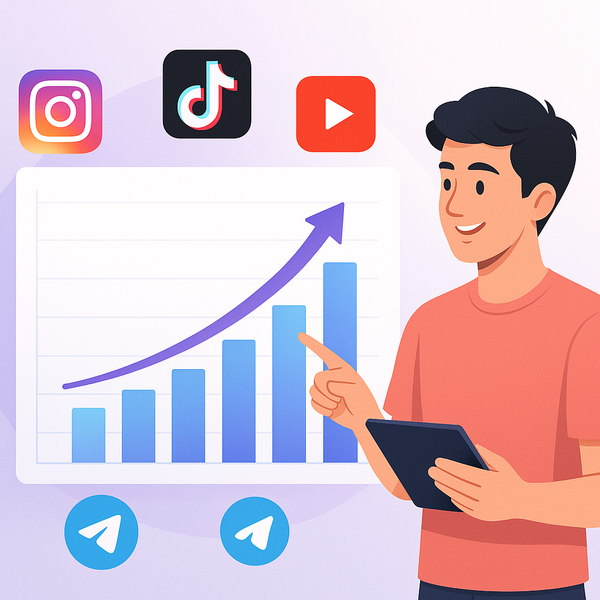How to Increase Organic Traffic to Your Website
Understanding the Importance of Organic Traffic
Organic traffic refers to visitors who land on your website through unpaid search engine results. Unlike paid traffic, it provides sustainable, long-term growth and brings in highly relevant users actively seeking your products or services. When done correctly, boosting organic traffic can dramatically improve your online visibility and generate consistent revenue without recurring ads spend.
Start with a Solid SEO Foundation
Before diving into advanced tactics, it's critical to have a SEO-friendly website architecture in place. This ensures search engines can crawl, understand, and index your content efficiently.
- Use Clean URLs: Include keywords and avoid unnecessary parameters.
- Optimize Site Speed: A fast-loading website improves user experience and is favored by search engines.
- Mobile Responsiveness: Ensure your site functions well on all screen sizes. Mobile-first indexing makes this crucial.
- Secure Your Site: Use HTTPS to build trust and meet modern SEO standards.
- Create an XML Sitemap: This helps search engines discover all your pages faster.
Target the Right Keywords
Keyword research remains the cornerstone of any successful content strategy. Understanding your audience’s intent and targeting keywords at each stage of the buyer journey can lead to higher rankings and better engagement.
Use Keyword Research Tools
Tools like SEMrush, Ahrefs, and Google Keyword Planner can reveal high-volume opportunities and competitor gaps. Aim for long-tail keywords with moderate competition and clear intent.
Focus on Search Intent
Don't just stuff keywords—match content with what users are actually looking for. Whether they want information, navigation, or to make a transaction, your content should provide exactly that.
Content: Quality Over Quantity
Publishing valuable content that answers real questions is the most efficient way to gain organic traction. Google prioritizes helpful, up-to-date, and in-depth information that provides genuine solutions to user queries.
Create Evergreen Blog Posts
Evergreen content continues to perform well over time. Think of topics like how-to guides, case studies, and tips that stay relevant for years. This kind of content earns organic links and shares, boosting your authority.
Use Engaging Format
Break down content using bullet points, headers, and visuals. Include internal and external links to support your expertise and improve SEO signals. Aim for natural language that captures readers’ interest while following Google’s latest guidelines.
Leverage On-Page SEO Optimization
Every piece of content on your site should be optimized for search engines and users alike. Here are essential on-page SEO practices:
- Title Tags: Keep them under 60 characters and include your main keyword.
- Meta Descriptions: Write compelling summaries that improve click-through rates.
- Header Tags: Use a clear structure (H2s, H3s) to organize content and highlight key topics.
- Alt Text for Images: This helps visually impaired users and improves image search visibility.
- Internal Linking: Keep users engaged by linking to related content on your site.
Build High-Quality Backlinks
Backlinks—from trustworthy and relevant websites—signal to search engines that your content is authoritative. While acquiring links takes effort, it remains one of the most effective ways to gain organic rankings.
Guest Blogging
Reach out to industry blogs with unique perspectives and secure a link back to your content. This boosts referral traffic in addition to SEO value.
Broken Link Building
Find broken external links on authority websites and offer your own content as a replacement. This provides mutual benefit and helps improve the web for everyone.
Create Share-Worthy Assets
Create infographics, statistics reports, and interactive tools others want to share. The more useful your content, the easier it is to earn natural backlinks.
Boost Engagement Through Social Media
While social signals aren’t direct ranking factors, an engaged audience on platforms like Twitter, Instagram, and LinkedIn can drive traffic and amplify your content's reach. Google notices who’s talking about your brand and where.
Repurpose Content
Turn long-form blog posts into short videos, social posts, and carousels. Cross-promotion increases visibility and taps into different audience segments.
Encourage Sharing
Add social sharing buttons to content pages. Ask users to share if they found value, and don’t underestimate the power of a good CTA.
Measure Your Results and Optimize
The only way to grow is to monitor your current performance and adjust accordingly. Regular SEO audits help you stay relevant and resilient against algorithm updates.
Track Key Metrics
- Organic Sessions: How many visitors found you through search engines.
- Bounce Rate: Indicates how many users leave without interaction. High bounce rates could mean irrelevant content.
- Page Load Times: Even slight delays can impact rankings and user satisfaction.
- Keyword Positions: Use tools to see where your keywords are ranking and identify areas to improve.
Conduct Regular Content Audits
Update outdated posts, remove underperforming pages, and consolidate content that overlaps. A lean and purposeful site delivers better results.
Final Thoughts
Growing your organic website traffic isn't about a single tactic. It's a blend of content excellence, technical optimization, and ongoing engagement with your audience. A well-structured strategy that evolves alongside user behavior and search engine landscapes is the key to long-term success.
If you're ready to take your digital presence to the next level, visit Crescitaly.com for premium Social Media Marketing services. From content amplification to comprehensive growth strategies, we help brands like yours thrive online!





